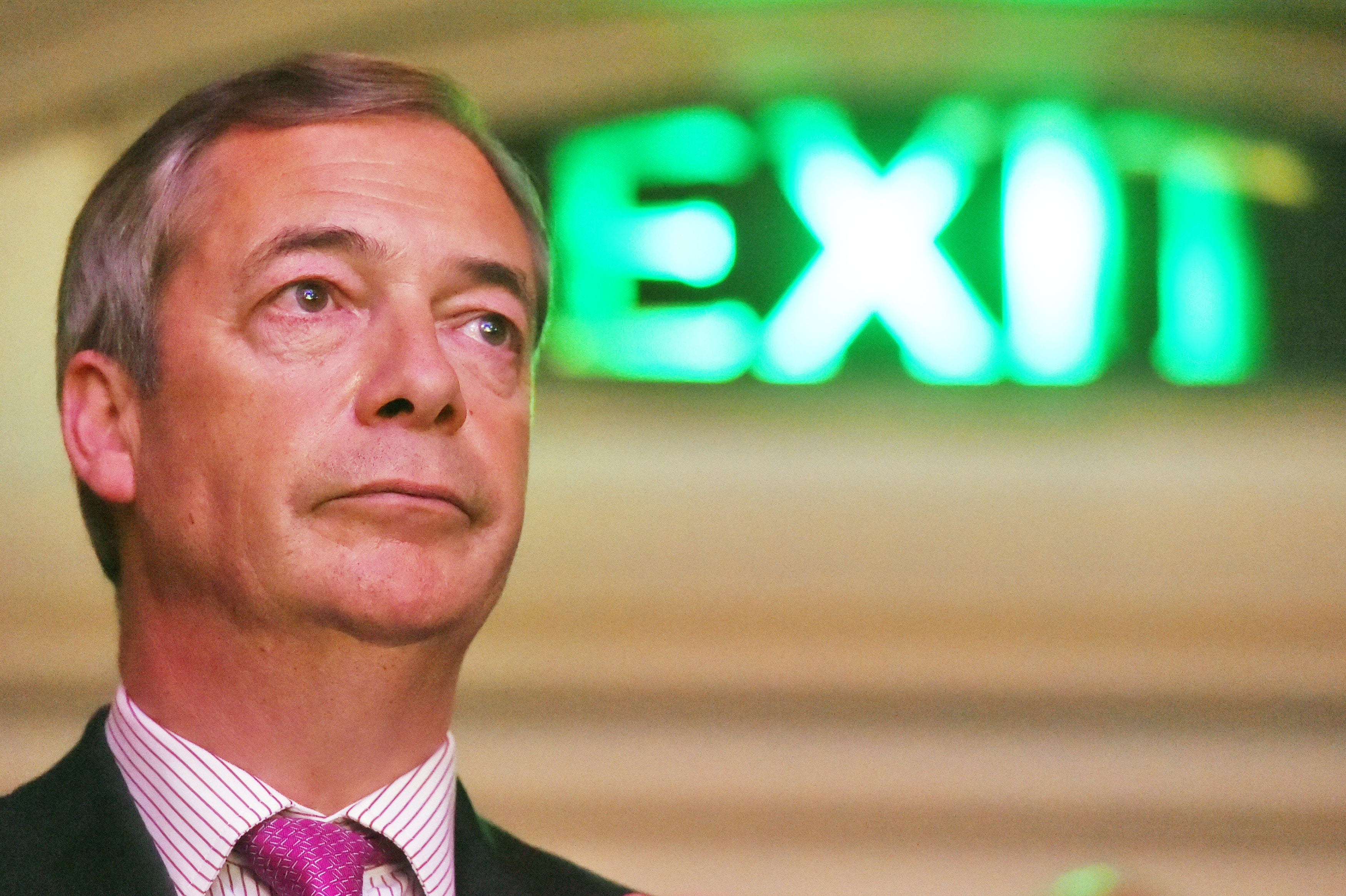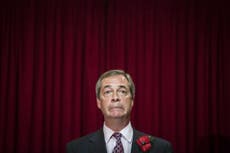Nigel Farage may be all for Reform – but he is still going nowhere
I won’t risk predicting that the Farage phenomenon is over, but this phase of his career is certainly a dud, writes John Rentoul


I have an interest to declare, in that I rashly said on live TV in June 2014 that, in five years’ time, we would have forgotten who Nigel Farage was. I could contend that I was six months out, in that he played a big role in the general election in December 2019 and has not been heard of since.
But that does rather overlook the period in between, in which he was possibly the most significant politician in British history never to have been a member of the House of Commons. I contend that a referendum on Britain’s membership of the EU was probable after Gordon Brown refused to hold one on the Lisbon treaty, but no one can doubt Farage’s role in mobilising public opinion through Ukip, putting pressure on David Cameron to make it a manifesto pledge.
Farage’s rise and fade has been full of paradoxes. Although he did so much to make it happen when it did, he and the “bad boys of Brexit” were not actually allowed a leading role in the referendum itself. Boris Johnson, Michael Gove and Dominic Cummings wisely wouldn’t let Farage and his allies near the official campaign. And if that campaign had been in the hands of Farage’s outfit, Leave.EU, it probably would have lost. Remainers ought to have been nicer to Farage – given him a peerage and an honorary chair at Oxford at the very least – and we might still be in the EU now.
His work wasn’t finished after the referendum, either, although Ukip more or less ceased to exist while he tried to ingratiate himself with the US president. But then he came back for another round when parliament was deadlocked and it seemed quite possible that we would never actually leave the EU.
He and Richard Tice set up a new party, the Brexit Party, the political equivalent of a flash mob. Organised on social media and email, it had a brief existence in real life, gathering large audiences – and sometimes less large ones, if anyone remembers the “march for Brexit” that attracted crowds one deep in places on the outskirts of Sunderland.
The Brexit Party was a key to the unlikely plot of the 2019 general election in that it helped tempt Jo Swinson, the Liberal Democrat leader, into making her historic mistake in agreeing to an election. Paradoxically, again, Farage’s role was unintended. By splitting the Leave vote, he gave Swinson the impression that an election might result in another hung parliament in which the Remainers might gain the upper hand.
In that extraordinary period when Boris Johnson became prime minister, the opinion polls showed people’s voting intentions were briefly split about equally four ways, between the Conservatives and the Brexit Party on the Leave side, and Labour and the Liberal Democrats on the Remain side (with Jeremy Corbyn desperately and ineffectively trying to hang to the remnant of the Labour Leave vote).
Once Swinson allowed the election to happen, the most important single event was Farage standing his candidates down in Tory winnable seats. The candidates who were left mustered a mere 2 per cent of the votes, clearing the way for Johnson’s handsome victory.
And that was the end of Farage, although no one can be described as “forgotten” when Michael Crick is writing a biography of them. Farage popped up a few times in videos shot on beaches, complaining about the arrival of desperate people from France in dangerous inflatable boats, and is now attempting to launch his fourth political career. He had at least two goes at Ukip, then the Brexit Party and now something called – after a brief spat with a think tank of the same name – the Reform Party.
Reform will be familiar to anyone who has seen those side-by-side videos of how Disney re-used scenes from its classic cartoons – Mowgli reincarnated as Christopher Robin, for example – to save the time and expense of redrawing the animations from scratch. Farage and Tice took the Brexit Party template and just drew over it. The Reform Party uses the same light blue colour scheme and arrow logo, and presumably all the same social media and email infrastructure.
Like the Brexit Party, it is built around a single, apparently simple proposition: it is against lockdowns and Covid-19 restrictions. This is curious, because when the pandemic first struck, Farage told his personal following on social media that the government wasn’t acting quickly enough to shut the country down.
After an uncomfortable period of transition, which was like watching political allegiances reorder themselves before our eyes, Farage aligned himself with the majority of hardcore Brexiteers on the anti-lockdown side of the argument. The mysteries of that sorting process are fascinating. Why should Remainers favour restrictions and Leavers tend to resist them? Whatever the reasons, Farage and Tice went that way with their new party.
However, then the second wave of infections hit, followed by the faster-spreading new variant of the virus. The anti-lockdowners found their arguments confounded by the behaviour of the virus and ended up in a small, uncomfortable and suddenly not very vocal minority.
Not only that, but the Reform Party’s main electoral target, to stand candidates in the English local and mayoral elections in May, is likely to happen when most of the population at risk from coronavirus has been vaccinated, and the restrictions will be well on the way to being lifted.
I won’t risk predicting that the Farage phenomenon is over. Brexit is not going to go away as a subject of contention, even if Boris Johnson seems to have the waterfront well covered. But this phase of Farageisme is certainly a dud.






Join our commenting forum
Join thought-provoking conversations, follow other Independent readers and see their replies
Comments